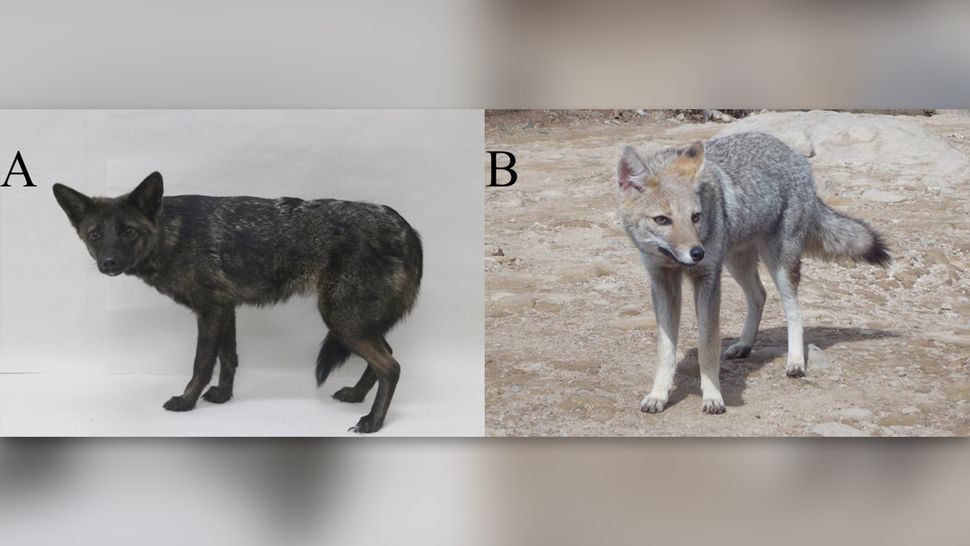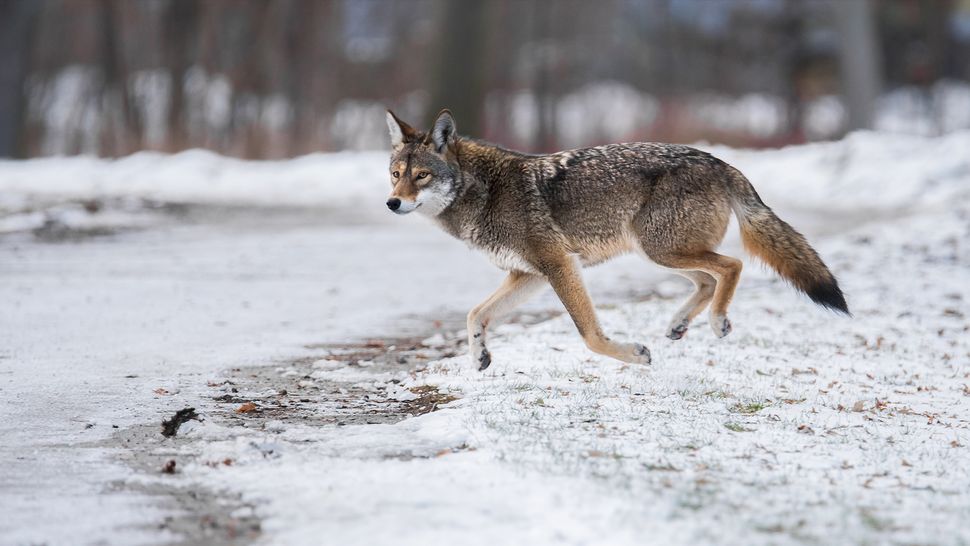Cross-species coupling in nature doesn’t adhere to rigid rules.
Occasional inter-species mating resulting in natural hybridization is a phenomenon observed in the animal kingdom. Humans, for centuries, have exploited hybridization to produce peculiar creatures, often for entertainment purposes. Although these hybrids may not be conducive to conservation efforts and can face health challenges, hybridization remains a natural occurrence.
Throughout evolutionary history, species across the globe have engaged in hybridization, continually adding new instances to the scientific record. From pizzly bears to wolphins, here are 10 examples of some of the most peculiar animal hybrids.
Borneo’s ‘mystery monkey’

A “mystery monkey” discovered in Borneo has been identified as a cross between a proboscis monkey (Nasalis larvatus) known for its distinctive long nose and a silvery langur (Trachypithecus cristatus). This hybrid is exceptionally rare as it originates from two distantly related species not typically found in the same genus.
The unusual mix may be attributed to competition for forest space, driven by shrinking habitats that lead male proboscis monkeys to assume control of langur groups. While hybrids are typically infertile, researchers observed that the proboscis-langur cross seemed to be nursing an infant, defying the usual expectations.
Pizzly bear

When the majestic polar bear (Ursus maritimus) engages in a romantic rendezvous with the formidable grizzly bear (Ursus arctos horribilis), the enchanting result is a hybrid known by the whimsical names “pizzly” or “grolar” bear. While encounters with these captivating hybrids are a rarity in the untamed expanses of nature, their presence is becoming more pronounced in the Arctic, propelled by the intricate dance of climate change.
As hunger-weary polar bears embark on southerly quests in search of plentiful sustenance, the resilient grizzlies, embracing the shifts in their environment, boldly advance northward. This ecological pas de deux brings forth not only increased encounters but also the mystical unions of these two iconic species. The tale of the pizzly bears unfolds against the backdrop of a changing Arctic, where climate-driven migrations and unforeseen connections weave a narrative that is both captivating and uniquely emblematic of our evolving natural world.
Ligers, pumapards, and various other hybrid crosses among captive cats

In the curious realm of feline fusion, humans have woven a tapestry of hybrid cats by orchestrating intricate unions between distinct species within the confines of captivity. Behold the peculiar progeny, such as the colossal ligers, majestic amalgamations of lion and tiger, and the diminutive pumapards, pocket-sized wonders born of puma and leopard liaisons. It’s a spectacle that both dazzles and raises ethical eyebrows, as conservation experts frown upon this intentional mingling, asserting that such hybrids contribute little to the noble cause of wildlife conservation.
Yet, amid the controversy, a fascinating revelation emerges from the pages of a 2016 study in the prestigious journal Genome Research. This scholarly exploration unveils evidence of ancient cat rendezvous, where the intertwining of feline destinies may have cast a subtle hand in shaping the evolution of our contemporary domestic cats. The echoes of historical interbreeding resonate through time, whispering secrets of why the present-day menagerie of hybrid cat concoctions flourishes within the controlled confines of human influence. It’s a peculiar dance between the past and the present, where the threads of history sew an unexpected pattern in the fabric of feline diversity.
Golden-crowned manakin

In the Amazon rainforest, there’s a cool bird called the golden-crowned manakin. It’s not your usual bird because it comes from a mix of two other types: the snow-capped manakin and the opal-crowned manakin. What’s even more interesting is that these golden-crowned manakins are now their own group—they don’t mix with the two types that made them.
In 2017, scientists found out about them in a fancy journal called PNAS. The scientists think the rivers in the Amazon kept these golden-crowned manakins separate from their parent types. So now, these unique birds have their own little world in the big rainforest!
Dogixm

In southern Brazil in 2021, the veterinary team faced a puzzling case when an unfamiliar creature sought treatment, blurring the lines between dog and fox. This enigmatic being, affectionately named “dogxim,” exhibited a mix of features from both a domestic dog (Canis lupus familiaris) and a pampas fox (Lycalopex gymnocercus), making it the pioneer of dog-fox hybrids.
While pampas foxes share a closer kinship with dogs than certain other fox species, like the red fox (Vulpes vulpes), this particular instance marked the first recorded encounter of a dog intermingling with a species beyond the Canis genus. The hybrid also stood as a unique milestone, representing the inaugural case of a domestic dog engaging in amorous pursuits with a wild canid anywhere in South America.
Narluga

Back in the 1980s, an Inuit hunter encountered an unusual trio of whales, shooting them down for their distinct features. These marine enigmas boasted the front fins of a beluga whale (Delphinapterus leucas), the majestic tail of a narwhal (Monodon monoceros), and a set of teeth that seemed to be a fusion of both. Preserving a skull from one of these peculiar creatures, the hunter unknowingly contributed to scientific discovery, as researchers later confirmed it to be the inaugural beluga-narwhal hybrid, now coined as the narluga.
In the Arctic, the realms of narwhals and belugas occasionally intersect during certain times of the year. Despite the norm of these two species keeping to themselves, researchers stumbled upon a lone male narwhal cohabiting with a group of belugas, offering a glimpse into the rare mingling of these Arctic inhabitants.
Coywolf

In the intricate dance of nature, the borders between wolves, dogs, and coyotes blur as they display a remarkable capacity to interbreed and give rise to intriguing hybrids. While these unions are often a product of human intervention in captive settings, the wild, too, bears witness to the convergence of these canid species.
Enter the realm of the eastern coyotes, a captivating chapter in the tapestry of wildlife genetics. Affectionately dubbed coywolves or coydogs, these creatures embody a living testament to the historical mingling of coyotes with both wolves and dogs across generations. This intricate interplay has sculpted a unique lineage, endowing the eastern coyotes with a size that stands intermediary between their smaller western coyote counterparts and the majestic wolves.
Picture the modern eastern coyote, a product of ancient crossbreeding, now carving its niche in the wild. With a physique larger than the typical western coyote yet more modest in stature than a full-fledged wolf, these canids have forged a distinctive identity. Despite their mixed heritage, contemporary eastern coyotes have predominantly chosen to uphold the tradition of mating within their own kind, weaving a fascinating narrative of adaptation and survival in the diverse landscapes they call home.
Sturddlefish

In 2019, Hungarian scientists accidentally created an extraordinary hybrid fish known as the “sturddlefish.” They crossed spiky-finned Russian sturgeons with long-nosed American paddlefish, two species that haven’t shared a common ancestor for 184 million years and aren’t even in the same family. The researchers used American paddlefish sperm to trigger asexual reproduction in Russian sturgeon, expecting nothing more than an experiment. To their surprise, the paddlefish sperm fused with sturgeon eggs, resulting in the unexpected birth of the sturddlefish.
Wolphin

A captivating wolphin captured on film at Sea Life Park Hawaii in 1992.
Wolphins, despite their intriguing name, are not the result of a surprising union between giant baleen whales and dolphins, as the name might suggest. Rather, they are hybrids within the dolphin family that have misleading nomenclature. Some dolphin species with “whale” in their name can interbreed with other dolphins, and their offspring are called “wolphins.”
The initial wolphin was born at Sea Life Park Hawaii, a product of a false killer whale (Pseudorca crassidens) and an Atlantic bottlenose dolphin (Tursiops truncatus). Since this inaugural pairing, humans have intentionally bred various dolphin hybrids in captivity, while occasional instances of natural hybridization have been observed in the wild. One such example occurred in 2017, when researchers identified a hybrid offspring between a melon-headed whale (Peponocephala electra) and a rough-toothed dolphin (Steno bredanensis) off the coast of Hawaii.
